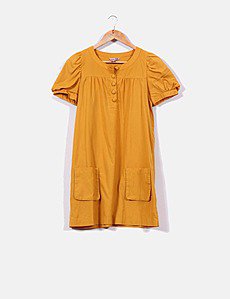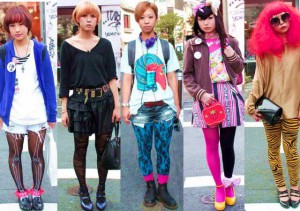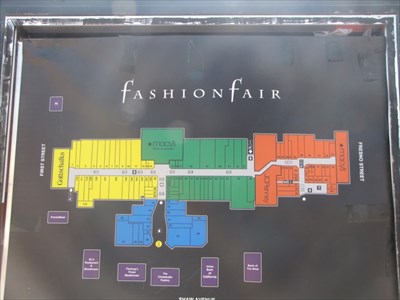
Look for fashion purchasing and fashion promotion jobs if you are interested in a career as a fashion professional. These jobs involve selling clothes and accessories, creating advertising campaigns, and figuring out how to make a product desirable. Listed below are some examples of jobs in fashion promotion. These positions can be very lucrative and are great for anyone who wants to make a career out of fashion.
Product developers
Product developers in fashion corporate jobs work to create and develop fashion products for retailers or manufacturers. They work closely together with designers and technical teams to develop products that target specific market segments. They may also travel abroad to source new ideas or trends. They also have to be in close contact with suppliers and manufacturers to ensure the highest quality of finished products.
Product developers work with a team and report back to a manager. They attend frequent meetings and offer feedback. They work closely with engineers and designers to develop prototypes and test their ideas. Product developers need to be creative, communicate well, and work well with others. They must also have the ability to conduct market research and evaluate proposed designs for marketability.

Buyers
Buyers in fashion have many responsibilities. They need to be able work under pressure and think on their feet. A buyer in the fashion industry must have excellent communication skills and be able to multitask. Buyers are an essential part of a brand’s product team. They are responsible for ensuring that a specific range of products is successful. This includes meeting with suppliers and negotiating contracts. This job requires people who are creative, business-minded, and have a natural flair for style.
Fashion buyers forecast consumer demand and price trends months, if not years ahead of the market. They are required to be up-to date with current trends and have an excellent understanding of the fashion business. They may be responsible for sourcing fabric in some cases. Luxury brands are not known for making their own fabric. They order specific dyes and prints directly from fabric manufacturers. Sportswear brands, on the other hand, create their own specialized fabrics. Fabric buyers need to be able to access a large number of suppliers and have strong relationships with the mills in order make the right decision.
Purchasing agents
The company's purchasing agents are responsible to acquire the correct materials. They coordinate with suppliers to ensure that material arrives on time and for the best possible price. They must be highly organized and have good negotiation skills. They must be up-to-date on the latest technologies and trends. They should be able work within a restricted budget.
Procurement agents are responsible to purchase parts and materials for companies. They need to be aware of market trends so that they can make the best purchases for the organization. They must also understand the market, so that they can ensure that they are using sustainable resources.

Publicists
Publicists in fashion corporations play a vital role in helping new designers or fashion lines gain popularity. Publicists influence the public's perceptions of fashion brands. This affects demand and pricing. This role requires strong written and verbal communication skills and excellent time management skills. Fashion PR professionals need to be familiar with the latest fashion trends and industry business practices.
Publicists in fashion corporate jobs handle the image and reputation of the brand or company, focusing on building long-term relationships with fashion celebrities and industry professionals. They organize press events, prepare press releases and plan fashion shows.
FAQ
Where do I find clothes?
Clothes are available everywhere. There are many places to shop for clothes, including department shops, specialty shops and discount stores.
Clothing stores include department stores such as Macy's, Sears, JC Penney, Kmart, Kohl's, and Wal-Mart; clothing chains such as JCPenney, Abercrombie & Fitch, American Eagle Outfitters, Zara, H&M, Forever 21, Express and Urban Outfitters; specialty shops such as Anthropologie, Banana Republic, Calvin Klein, Gap, Guess?, Hollister Co., Justice, Levi Strauss, Nordstrom, Old Navy, Pac Sun, Pier 1 Imports, Target, Tommy Hilfiger, Victoria's Secret and Wet Seal; discount stores such as Dollar General, Family Dollar, Fred Meyer, Goodwill Industries and Value City Furniture; thrift stores such as Salvation Army, Good Will and Good Neighbor Thrift Store; garage sales; and consignment stores.
What's the difference in high-end and cheap clothing?
Cheap clothing is often low-quality and lacks many features. Although high-end clothing tends to be more expensive, it offers many additional features.
Celebrities and models are more inclined to buy high-end clothing brands. These kinds of clothes are often featured on runway shows and red carpet events.
Which is better: designer or name brand?
Designer clothes can be more affordable than clothes from the same brand. Designer clothes are typically made of inferior materials.
Name brand clothes are made with better quality materials. They are generally more durable and last for a longer time.
Statistics
- The lowest 10 percent earned less than $32,150, and the highest 10 percent earned more than $124,780. (en.wikipedia.org)
- Finally, Express carries petite sizes, which, according to the retailer, are meant for women 5'4″ and under. (collegefashion.net)
- STUDENTS GET 10% OFF GET YOUR CODE (asos.com)
- Another ethical fashion company, [43] Consumption as a share of gross domestic product in China has fallen for six decades, from 76 percent in 1952 to 28 percent in 2011. (en.wikipedia.org)
- The middle 50 percent earned between $42,150 and $87,120. (en.wikipedia.org)
External Links
How To
How do I find a good trend in fashion?
There are many ways you can find a good trend in fashion:
-
Look at magazines or websites such as Vogue, Elle, Harper's Bazaar, Glamour, Cosmopolitan, InStyle, etc. These publications have articles about current trends in fashion.
-
Ask friends and family for advice. Ask them what they think about it.
-
You can read blogs online. Bloggers post information every day about current trends. Read their posts to learn more about the latest trends.
-
Check out TV shows and movies. The outfits of the characters can tell you a lot more about the latest trends.
-
Visit stores. You will often find the latest trends in store displays. You can see that there are many leggings in a shop, which is a sign that leggings have become very popular.
-
Go shopping. Shop at clothing stores while you are in a mall. You might be able buy certain items there.
-
Visit social media sites. Many celebrities post photos showing themselves in particular clothing. This gives you an idea what's in fashion.
-
Google. Type in "fashion trends" and the type of clothing that you are interested in learning more about.
-
Look for inspiration in other countries. There are so many cultures to choose from. Some of these cultures have very distinct styles.
-
Follow celebs. Celebrities are always showing off their style. Some celebrities might even inspire you with their style tips.